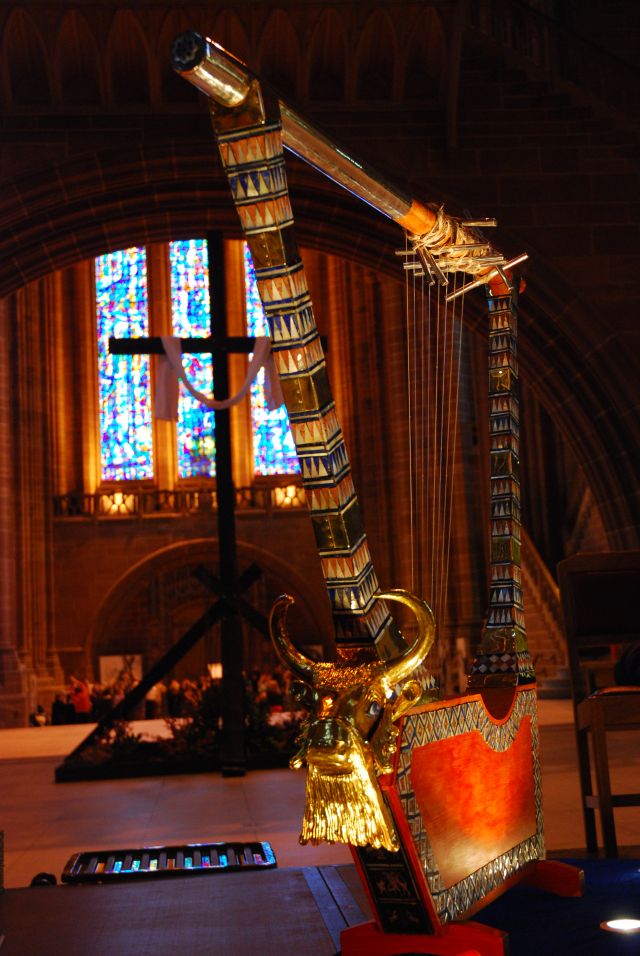This lunchtime I went to see the 4,500-year-old Gold Lyre of Ur on display and being played at the Anglican cathedral. This instrument predates the construction of the Pyramids and even Stonehenge.What we saw is an exact, playable replica of a damaged original, reckoned to be the earliest stringed instrument ever discovered. It has been painstakingly made from scratch, with genuine materials such as wood from Iraq, after the original was looted and badly damaged in the ransacking of Baghdad’s museum of antiquities following the US-led invasion five years ago.
The authentic cedar wood was donated by Muslim Aid in Baghdad to the artists and craftsmen working on the project, and brought to the UK by the RAF. The recreated instrument – similar to a modern harp – also has a strong Merseyside connection, as some of the work was done by Lairdside Laser Engineering Centre, part of the University of Liverpool. The whole five-year project was masterminded by Andy Lowings, himself a harp player and a civil engineering graduate from Liverpool, who has taken the instrument to several countries around the world. He played the lyre in the central nave of the cathedral.
Mr Lowings said: “Everything about it is, as far as possible, exactly the same as the original, including the wood, stone, and bitumen. It is also covered in gold worth $25,000.
The gold bull on the front was regarded as highly iconic and revered as a god. It’s a rather mysterious story that we tell: the original instrument was found in a grave dating from 2550BC in Iraq, along with 60 or so female attendants who’d all committed suicide with it. The last player still had her hand over the instrument.
“It gets its name because the underground chamber where the instrument was found is 50ft down in the ground in Ur – which was also the birthplace of Abraham – 200 miles south of Baghdad. The original one is now in bits. The replica has taken up five years of my life and is indicative of the importance of reconstructing something that was of significance to both Iraq and musicians. It also brought together four very different groups to work on the project – the UK-based artists and craftsmen, Muslim Aid, the Iraqi community, and the coalition forces. It’s a wonderful example of how art and music can do things that politics can’t.”
Eryl Parry, director of hospitality at Liverpool cathedral, said: “This is one of those magical things that ought to happen in Capital of Culture year. ”
About the lyre of Ur project




